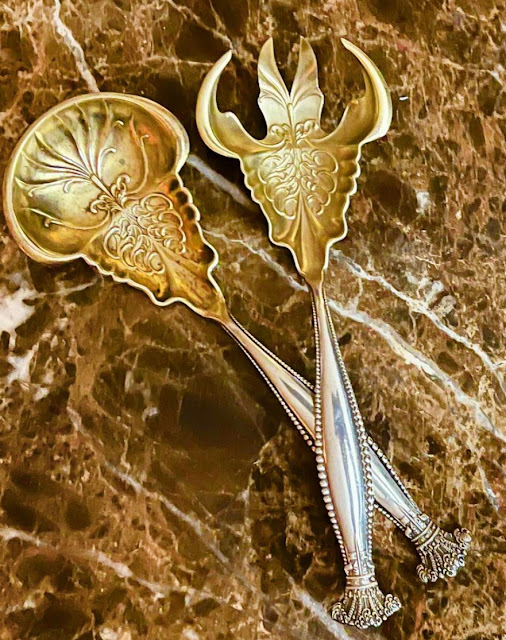“Second Début” Post on Gilded Age Dining…
Gilded age servers for the dining room – “A marked change has taken place in the fashion. The late evening dinner has for years been steadily gaining in popularity, and promises to become even more common than it is now. Thoughtful men and women recognize the wisdom of eating lightly at midday, when they are in the full tide of business, and reserving the heartiest repast for an hour when it can be discussed leisurely and digested peacefully.” – 1890More Fashionable is the Late Time to Dine
Twenty or thirty years ago the late dinner was not nearly so popular as it is now. The majority of people dined in the middle of the day, and not a few of them considered a six-o'clock dinner as an effort after fashion, that was unworthy the imitation of sensible men and women. Even in the large cities, servants rebelled against an alteration of the time-houored custom of serving the principal meal of the day at, or near noon, while in small towns the late dinner was so unusual that it was almost impossible to persuade domestics to consent to it.
A marked change has taken place in the fashion. The late evening dinner has for years been steadily gaining in popularity, and promises to become even more common than it is now. Thoughtful men and women recognize the wisdom of eating lightly at midday, when they are in the full tide of business, and reserving the heartiest repast for an hour when it can be discussed leisurely and digested peacefully. Mistresses have learned that there is a gain in keeping the morning free for housework, instead of devoting most of it to the preparation of the dinner.The light lunch eaten in most homes demands much less time in cooking and eating than does a dinner, and leaves those who have partaken of it more fit for work than they would be, were their stomachs burdened with the task of digesting soup, meat, vegetables and dessert.
The late dinner is a more dignified meal than can possibly be made of a similar repast eaten at noon. The festal appearance imparted by the gleam of candles, lamps, or gas upon silver, china and glass, cannot be acquired by daylight. The pleasant harmony around the board of the members of the family, whose positions and interests have been divergent since morning, the happy consciousness that the work of the day is done, the knowledge that there is no toil waiting at the door of the diningroom, all bear their share in rendering the meal cheerful and care-free.
More ceremony can and should be preserved at the evening dinner than is feasible at noon. The orderly sequence of courses and the careful serving have a part in adding to the dignity of the meal. These suggestions should not frighten the house-keeper who contemplates introducing the late dinner into their household. Very little extra work is involved in bestowing the touch of state referred to, and, after all, it consists chiefly in a slight additional care in waiting and serving, and to these the mistress can readily accustom the maid.— Christine Terhune Herrick, in Harper's Bazaar, 1890
🍽Etiquette Enthusiast, Maura J Graber, is the Site Editor for the Etiquipedia© Etiquette Encyclopedia

No comments:
Post a Comment
Note: Only a member of this blog may post a comment.